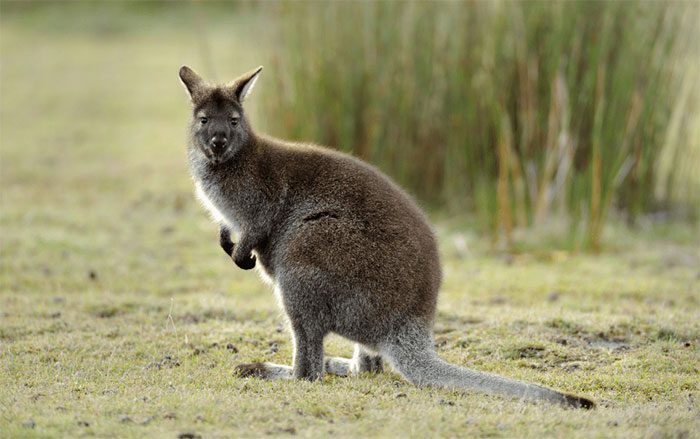Mammals can become pregnant multiple times, but they must pause conception for a period after each birth. So what is the peculiar phenomenon that allows Wallaby rats to become pregnant even before giving birth?
Wallaby is a small marsupial resembling a kangaroo but smaller in size. The largest can reach about 1.8 meters from head to tail and weigh around 30 kg. Wallabies are native to Australia, found everywhere, especially in remote areas, rocky mountains, and rugged terrains.
Continuous Pregnancy
Most mammals around the world can become pregnant multiple times during their adult life. However, the majority must pause this process for a while after each birth. In contrast, female Wallabies can conceive 1 to 2 days before giving birth to another offspring in their womb.
Scientists explain that female Wallabies have two uteri, each with its own ovaries and cervix, making it easy for them to conceive while already pregnant.

Wallabies can conceive 1 to 2 days before giving birth to another offspring.
According to researchers, the reproductive cycle of a female Wallaby is very continuous. They typically mate in January and February, conceiving a new offspring 1 to 2 days before giving birth to the one already in the womb. The newborn will crawl into the mother’s pouch for care. The newly fertilized embryo, known as a blastocyst, consists of about 80 to 100 cells and will remain inactive in the uterus.
Meanwhile, the newborn will continue to nurse and gradually grow. By around September, the “baby” will be ready to leave the mother’s pouch. This period coincides with spring in the Southern Hemisphere (Australia is in the Southern Hemisphere), where lush green grasses are abundant, favorable for the growth of young Wallabies. At this time, young Wallabies will require less maternal care and will be weaned by December.
Embryonic Stage: Blind Wallaby Young
During the embryonic stage, Wallaby young are hairless, blind, and about the size of a pea. After about 4 to 5 weeks of gestation, they are transferred to their mother’s pouch and begin to nurse for 6 to 8 months.
They must remain in the pouch until they develop sturdy bodies, grow fur, gain eyesight, and can jump before they can appear. Initially, young Wallabies spend most of their time outside to graze and acquire necessary life skills, returning to the pouch only to sleep or when they feel threatened.
In some species, the young can stay in the pouch for another year or until another offspring is born. However, most begin to live independently after 9 months of birth.
A female Wallaby can produce two different types of milk simultaneously. One type is specially formulated for the growing young, while the other caters to Wallabies that have begun to leave the pouch.
Young Wallabies will suckle from different teats to choose the right type of milk for themselves. Each type of milk contains different components of fats, carbohydrates, and proteins. The milk for older young contains a higher fat content.
No other animal species has been observed to produce two types of milk simultaneously like Wallabies.
Warning of Danger to the Herd
Wallabies communicate with each other through visual and olfactory signals, which are common communication methods among Wallabies. They also use body language; when a Wallaby senses danger, it will stand still and make a rhythmic foot tapping motion as if drumming to alert other members of the herd about the potential threat.
The foot-tapping is often accompanied by soft squeaks and snorts. If a real threat is encountered, they will use their feet as weapons. They can perform powerful jumps using their hind legs, while carrying their young in the pouch located at the front of their body.
On land, they can only move by using both hind legs simultaneously, but when swimming, they can use each leg flexibly.


















































